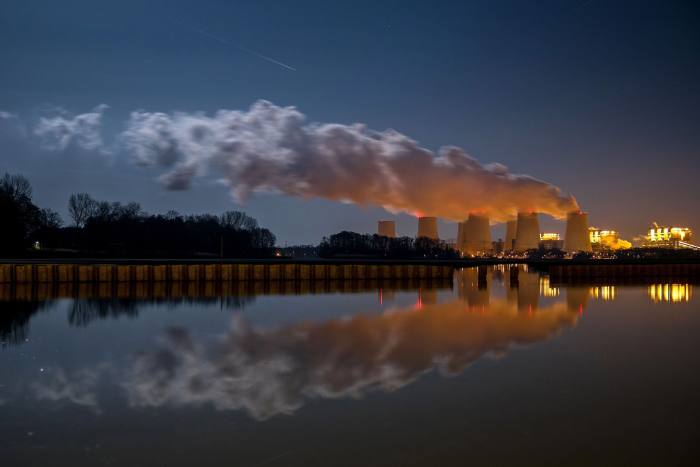Covid-19 experience is a warm-up for the EU’s Green Deal
What do the Covid-19 experience and the EU’s Green Deal have in common? More than meets the eye.
As in wartime, the pandemic has led to unprecedented restrictions to personal freedoms, including private travel, access to consumer goods and services.
But while politicians have promised a ‘green recovery’ from the pandemic to ‘build back better’ there are concerns that their sums do not add up.
Frankly, if Europe is serious about hitting its target of reducing greenhouse gas emissions by 2030, it is not hard to see that more restrictions and disruptions will lead to long-term lifestyle changes.
There has been the implicit hope that emissions reduction can continue in a way which only inconveniences citizens minimally. But hopes that the necessary wind turbines and overhead cables can be built without spoiling the countryside and impinging on normal life are seriously misplaced.
In the first phase of Europe’s seminal climate plan, the goal was to reduce emissions 20 per cent by 2020 from 1990 levels, and this has been comfortably achieved.
Last week, the European Parliament and Council reached provisional agreement for a law to set a target of a 55 per cent reduction from 1990 levels by 2030. That means that Europe must now reduce emissions by 35 per cent in just one decade as opposed to the 20 per cent achieved over the previous three decades.
Twice weekly newsletter

Energy is the world’s indispensable business and Energy Source is its newsletter. Every Tuesday and Thursday, direct to your inbox, Energy Source brings you essential news, forward-thinking analysis and insider intelligence. Sign up here.
Unfortunately, the worthy ambition has not yet been matched by a credible plan. Since 2005, renewable power has been the main workhorse accounting for over 60 per cent of emissions reduction, and will remain as such, coming to play a vital role in clean electrification.
However, renewable power is struggling to grow at anything like the rate required to make the EU’s ambitious targets a reality.
Calculations from the Centre for Environmental Management Energy and Resources at the Ruhr University Bochum, show that even in an optimistic scenario, 65 per cent of the incremental renewable power available will be required to replace nuclear and coal plants earmarked for closure. That means no additional power, just substitution.
The next 25 per cent will be required for heat pumps, leaving only enough power left over for only two-thirds of the electric cars expected to be on Europe’s roads by 2030.
There is, put simply, a serious supply gap.
But it gets worse. Renewable power will only cut emissions by 40 per cent of the target reduction by 2030. Crucially, there would be no renewable power available by 2030 for green hydrogen production, which requires renewable electrolysis.
Climate Capital

Where climate change meets business, markets and politics. Explore the FT’s coverage here
Much political capital may be invested into hydrogen, which is now regarded as essential to decarbonise heavy industry. However, the use of clean power for hydrogen production only reduces emissions by about one-third of what can be achieved by other applications.
One way to meet Brussels’ hydrogen strategy is to import the fuel, ideally from desert areas such as Algeria and Saudi Arabia where plentiful sun and wind enable the lowest global renewable power generation costs.
But contractual negotiations, followed by construction of the production and transport facilities, take time, and it is far from clear whether more than token deliveries can arrive by 2030.
Beyond renewable power, there are other tools to reduce the remaining 60 per cent of the emissions targets — different forms of renewables, further efficiency measures and increased application of waste heat.
Assuming comparable rates of progress as achieved since 2005, these measures could deliver some 27 per cent of the required reduction.
But there still remains a 33 per cent gap in the reduction now targeted from 2020 to 2030. This is where the Covid experience comes into play.
Given that current attempts to increase the rate of renewable production and to curtail emissions are not substantial enough, the serious question must now be asked whether governments will look to acquire special powers of the type normally only required in wartime.
Governments would have to force through an array of extremely unpopular but essential measures by compulsion rather than coercion through carbon taxes.
These would include using every suitable hectare of land for onshore wind, giving offshore wind absolute priority in maritime spatial planning, forcing homeowners to pay for stronger insulation and heat pumps, and severely restricting the use of any kind of travel dependent upon oil products.
Steps to combat the virus have already moved restrictions accepted within a democracy to its limits. But either such limits will need to be pushed even further, in ways which current constitutional provisions would not permit, or based on simple analysis there is no credible way to meet the Green Deal target.
Prof Graham Weale, honorary professor for energy economics, Centre for Environmental Management Energy and Resources (Cure) at the Ruhr University Bochum
The Commodities Note is an online commentary on the industry from the Financial Times